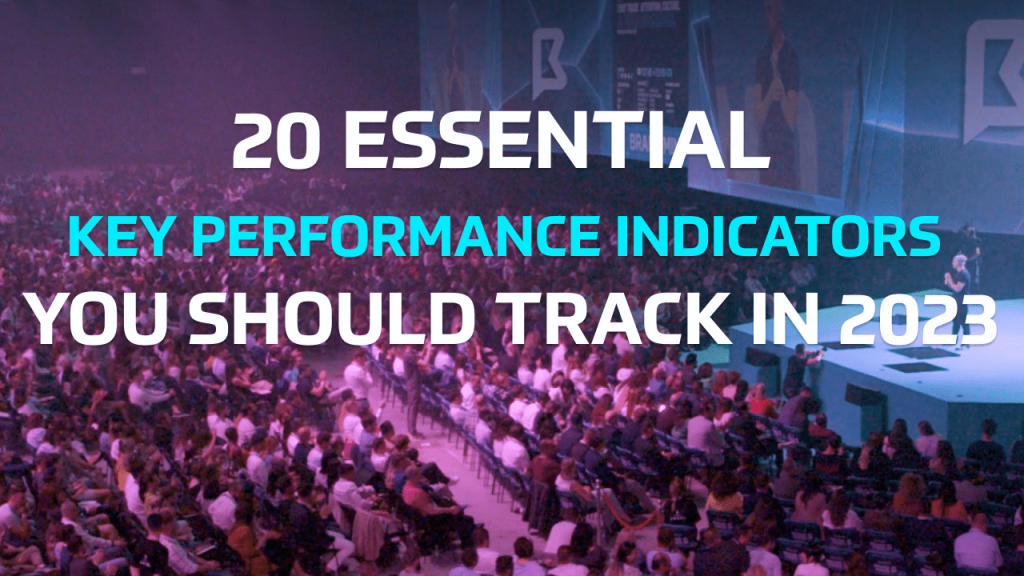20 essential KPIs you should be tracking to improve your marketing
Looking to learn about KPIs and how you can use them to improve your marketing? Then this article is for you!
Table of Contents
What is a KPI in marketing?
KPI stands for key performance indicators.
A KPI in marketing is a measurable value tied to the specific objectives of a marketing campaign.
KPIs help measure marketing effectiveness at the end of a campaign.
KPIs vs marketing metrics
Isn’t KPI the same as marketing metrics?
No, it’s not and you must be able to know the difference between KPIs and marketing metrics.
Marketing metrics are measurable values that include everything from the number of followers of the brand’s page on Facebook, Instagram, YouTube, TikTok to website traffic, email subscribers, MQL (marketing qualified leads) and the list can continue. It’s everything you can measure at any given time.
The KPI belongs to the marketing metrics category, it is indeed a marketing metric itself.
The difference is that the KPIs are tied to a specific goal of a specific marketing campaign whereas marketing metrics are not tied to a specific goal of a specific marketing campaign.
Every marketing campaign has one or several marketing goals. To measure how effective your campaign was to achieve your goals, select the appropriate KPIs.
How are KPIs used to measure performance in marketing?
Before we talk about how to use KPIs to measure and track performance in marketing campaigns, it’s essential to understand the brand’s business goals and objectives.
You cannot measure progress if you don’t know what progress looks like. Or what success means for your business.
So, if you are the leader of your team, share the brand’s business goals for 2021 with your colleagues.
They could focus on revenue (increase sales), suppliers (replace old suppliers with new, more performant ones), employees (reduce employee turnover), profit (increase profit margin) or market (increase market share).
Once everyone in your team is aware of the business goals they need to achieve, you can move on to the next step: establishing marketing goals.
Here are some of the common marketing goals:
- Increase Brand Awareness
- Lead generation
- Promote new products/services
- Target new customers
- Increase website traffic
- Grow your email list
If your business goal is to increase revenue, what marketing campaigns your team needs to create and run in order to achieve it?
You could consider implementing several marketing campaigns. For example, a marketing campaign targeted at new customers or a marketing campaign targeted at your current customers with the goal of upscaling. What would you like them to do: buy more in quantity or buy products that are more expensive?
The KPIs tied to this particular marketing campaign could be 20% new leads generated or 20% customer conversion rate.
Here are 20 essential KPIs that you should track to measure your marketing performance:
- Email open rates
- Email click-through rates
- Email forward rates
- Newsletter signup conversion rate
- Social media engagement rate
- Social media conversions
- New leads generated
- Cost per lead
- Customer lifetime value
- Returning website visitors
- Goal completion rate
- Marketing revenue attribution
- Customer acquisition cost (CAC)
- Landing page conversion rates
- Traffic-to-lead ratio
- Lead-to-customer ratio
- Customer retention
- Content downloads
- Referral traffic
- Net promoter score
1. Email open rates
You worked hard to gain new subscribers to the company’s newsletter, but all is in vain if your emails remain unopened.
Optimize your headlines. Are you sending too many emails per week? If you do, but your subscribers don’t click the unsubscribe button, then they wish to receive your emails but they are too often which leads to email fatigue.
2. Email click-through rates
Your subscribers are opening your emails – that’s great! One of your email campaign goals is to drive website traffic so the email clickthrough rate is an important KPI.
If you note this particular indicator is unsatisfactory (what value did you set for email clickthrough rates?) because the subscribers are not clicking on the links, you should consider the content and the copy. Is the linked content relevant to subscribers?
Re-write the copy: don’t use ‘learn more’ to persuade the subscriber to click the link. Get creative!
3. Email forward rates
The email forward rate is one of the most important KPIs if you are looking to grow a community for the brand.
Opening the email and clicking on the content links inside is one thing, but making your message so relevant to your subscribers that they forward it to someone else is a great achievement.
4. Newsletter signup conversion rate
How many people did your email subscribing campaign convert?
This KPI shows how well you were able to find a match between the brand’s offering and their interests, to speak to their values and show them your solution to their pain points.
5. Social media engagement rate
They say liking a post is the easiest engagement action that your followers can take whereas commenting is the hardest.
Having followers that take the time to express their opinion in a comment to your post is more valuable than receiving likes. It also tells the algorithm that this piece of content is sparking conversations which prompts it to show your post to more people.
6. Social media conversions
It’s nice to have a big number of followers on social media accounts, preferably in the millions. It is an indicator that the brand is popular and a lot of people want to stay connected with the brand.
After having said that, let’s also not forget that the algorithm shows your content to a small number of people. Some say it’s under 1%. So this vanity metric is a nice-to-have feature, but it is not essential.
What is instead relevant is how many conversions does your social content drive? How many clicks to the website? How many email subscribers? How many leads does it generate?
7. New leads generated
Generating new leads is paramount for every brand. You need to constantly show your products or services to new leads gently nudging them to the next step in your marketing and sales funnel.
Check this to get your creative juices flowing: 5 fast ways to generate leads on your website
8. Cost per lead
Lead generation is important, but if the cost of acquiring leads is high, you need to take a step back, analyze every stage of the process and see where you can improve it.
The Pirate Funnel may help you pinpoint where your business is losing customers.
9. Customer lifetime value
Customer lifetime value is the total revenue you can expect from a customer during the period that they remain a customer. Or simply put: how much are they worth to your brand? For example, Amazon Prime members are worth twice as much as non-Prime shoppers. Prime shoppers spend $1,340 annually, more than twice as much as non-Prime shoppers, who spend $650 annually.
10. Returning website visitors
Having a good amount of website traffic is necessary if you want to run ads, show up in organic search results and gain email subscribers.
Your website is owned media, it’s where you control the content – your brand is not at the mercy of any social media algorithms. It’s important to measure the number of new visitors your website gets every month. But equally important is to track how many visitors return to your site.
Returning visitors tell you that your website is a relevant and valuable resource for them. It’s how your brand stays top of mind. It’s also easier to convert returning visitors to leads and then customers.
11. Goal completion rate
Marketers set a goal for every marketing campaign they run. The goal completion rate is a KPI that measures the number of people that complete a specific marketing goal.
How many people subscribed to the brand’s newsletter? How many people have signed up for your freemium offer? It is an important indicator of your brand’s ability to influence to get from the awareness stage to the consideration stage in your marketing funnel.
12. Marketing revenue attribution
Every marketer wants to know how much profit their campaigns have generated. The marketing revenue attribution KPI does exactly that: it tracks and credits the company’s marketing efforts with the generated revenue.
If you are running mobile campaigns, marketing revenue attribution can prove to be a challenge. There are platforms to help you out, it’s only a matter of finding the right one for you.
13. Customer acquisition cost (CAC)
Do you know how much it costs your company to acquire a new customer?
As a business person and a leader, it’s one of the most important numbers you should be aware of. This KPI can be calculated by dividing all costs spent on acquiring new customers (advertising spend, the marketing and sales department salary costs) by the number of customers. Now that you know what your company’s CAC is, if it’s too high, you can start looking for ways to lower it.
14. Landing page conversion rates
Your team has designed a beautiful landing page for your company’s latest offering of products or services. And you are running a campaign to send leads to that landing page with the goal of converting them to customers. The landing page conversion rate KPI shows the performance of the landing page.
If the page has a poor conversion rate, analyze it to see if the graphics and the copy can be improved.
15. Traffic-to-lead ratio
This KPI tells you how many of your website visitors convert to leads. First, you need to establish what exactly means a lead for your brand.
What do you want your website visitor to do? Depending on what your company offers through its website, it could be anything from a newsletter subscribing, downloading a PDF paper, answering a survey or registering for a 7-day free product subscription.
If this ratio is unsatisfactory, one of the main questions you should ask yourself is ‘Are you attracting the right people to your website?’
16. Lead-to-customer ratio
Now that you have established the traffic-to-lead ratio, the next step is to establish the lead-to-customer ratio.
From the total number of leads, how many convert into paying customers? How many push the Buy button? What are you doing to convince them to become customers? Are your leads qualified? A qualified lead is someone who could become a potential customer to you, based on criteria and identifying information that they have freely provided.
17. Customer retention rate
The customer retention rate indicates the brand’s ability to serve and satisfy its customers so well over a given period of time that they have become loyal.
It’s every brand’s dream: customers that are happy to continue to do business. If this KPI is high, then you are doing something right. You may also consider designing a brand ambassador program as your next step. We all know that acquiring new customers is more expensive than retaining existing customers.
18. Content downloads rate
Downloadable content is usually hosted on a landing page as a lead magnet. It helps marketers establish if the content is relevant to the page visitors and if the copy is effective. The visitor who downloaded the content is now a lead and the brand can begin a conversation which could eventually result in a sale.
19. Referral traffic
Directing people to your website is hard work and it usually takes 6 to 12 months to see results for some companies or 3 months for other companies depending on the industry.
Referral traffic is one of those results and describes the people who come to your website from other sites, without searching for your brand on Google. It could be a link on your social media post, or in a blog published by one of your clients. If they are linking back to your website it means your content was helpful to them which in turn helps your brand increase awareness and domain authority.
20. Net promoter score
When we are satisfied with a product or service, we recommend it to our friends and family. It’s one of the most powerful ways a brand can attract customers – word-of-mouth marketing.
The Net Promoter Score assesses the customers’ overall satisfaction and calculates the likelihood of recommending a company or its products.
5 easy steps to set SMART goals in marketing
Looking to set achievable marketing goals? Be SMART and follow these 5 steps!
Your product solves your customer’s problem efficiently. It looks good, it is easy to use and offers more value for its price than other available products. But your prospects don’t know that. Yet.
Now that your product is finished and ready to delight your customers, you need to do some marketing. Why? Because as sales expert Grant Cardone puts it, Best product does not win the game; best KNOWN product wins the game. If you want to learn more business takeaways from Grant, watch this 2-minute video.
Are you ready to start your marketing journey?
Let’s go!
First of all, we need to talk about marketing goals. There are many marketing goals you can set for your company depending on the stage you’re in.
Companies today don’t usually wait for the product to be finished, they begin to market the product while still in early development. It’s a smart move. What they are doing is building a tribe for their product and raising awareness for the company. The members of the tribe will be the first people to buy the finished product. They are more likely to become ambassadors for the product and the company can attract new customers from word of mouth marketing.
Marketing goals for this stage could be building an emailing list of enthusiasts interested in your product. These individuals would be your product’s die-hard customers and it would also be smart to find ways to get to know them and engage with them. And even ask for their ideas on features that could improve your product.
Once the product is finished, the company already has its first customers, it doesn’t start marketing from zero which could be a competitive advantage.
But if you’re company doesn’t take this build-it-before-it’s-finished approach, don’t worry, there are many other marketing goals you can set for your company.
Here are 6 marketing goals that you should set in 2021 to support your company to achieve its business vision:
- Increase brand awareness
- Empower your email subscribers
- Build brand ambassadors
- Boost your sales through referral programs
- Identify customer behaviour change
- Increase website traffic with guest content
If you want to know more about these six marketing goals, read this article where I discuss each of them in-depth.
Now that we’ve touched on the subject of marketing goals, let’s see what SMART and setting SMART goals in marketing means.
S.M.A.R.T. is the acronym for Specific, Measurable, Achievable, Relevant and Time-bound and refers to business objectives.
Consultant George T Doran is credited with writing down the S.M.A.R.T. acronym and laying out the main principles of SMART goals in his 1981 paper, “There’s a S.M.A.R.T. way to write management’s goals and objectives”.
Although the SMART concept was created to support good management, setting SMART goals goes beyond that and can be used as a rule of thumb for setting goals in every area, business or personal.
What does a SMART goal in marketing look like?
You first start with a SMART business goal.
Here’s an example. Let’s assume you have an online ladies’ shoe shop. You want to grow your business.
A SMART business objective should be defined like this:
Spring is around the corner. I want to sell 15% more ladies’ shoes for spring. To achieve this I will invest $1000 in Facebook ads targeted at young fashion-forward professional women for a period of 3 months.
Why is this business objective SMART?
Because it is specific and measurable.
There are many ways in which you can grow your business (partnerships, investments etc), but you have chosen to focus on sales. You also narrowed down the sales offer to shoes for the springtime, not office shoes or running shoes. The 15% increase in sales is measurable.
Let’s assume your sales have grown by 10% last year, therefore, a 15% increase is achievable whereas a 100% increase in sales would not be achievable.
You have also decided to invest $1000 in Facebook ads to target a specific customer base comprised of young fashion-forward professional women. Once again, specific and relevant to your business.
Your Facebook campaign will run for three months so the business objective is also time-bound.
Now that you know what a SMART goal in marketing should look like, I’ve put together a simple template with 5 easy steps that you can use to set SMART marketing goals for your company.
5 easy steps to set SMART marketing goals
1. Link the marketing goal to a business goal
As you saw in the example above, marketing goals must be relevant to the overall business goals.
So the first step is to set a marketing goal that relates to your business goal.
It could be a short-term goal like increasing sales of a specific product or it could be long-term business goals like increasing brand awareness or share of voice.
To increase sales you could set several marketing goals like increasing the number of qualified leads or increasing the number of email subscribers. To achieve long-term business goals like brand awareness you could increase the number of brand ambassadors or increase website traffic.
2. Establish the benchmark
Pulling numbers out of thin air is not going to help you achieve your goal.
Perform a marketing analysis before setting a new marketing goal. Run the numbers and come to a conclusion with regard to previous results.
How much does it cost to get a new customer or a new email subscriber?
What is the average cost per lead?
What is the current landing page conversion rate?
Learn how to calculate them and other key performance indicators in this two-part article.
Only after you know these numbers ie the benchmark, you can set achievable marketing goals.
3. Write the goal using the SMART framework
Follow the example above and make your marketing goal specific, measurable, achievable, relevant and time-bound.
4. Design the strategic plan you will use to achieve the SMART marketing goal
The goal of a strategic plan is to provide you with a roadmap to achieve set marketing goals.
The plan outlines what (resources), how (specific tools, activities, platforms etc) and why (the reasons behind your choice of a specific resource or tool) the company will use to achieve this goal.
Referring back to the online ladies’ shoe shop and its goal to increase sales by 15% through Facebook ads, you need to establish who will design the creative concept of the Facebook campaign and who will write the copy.
What is the format of the campaign: video, image, link? Once the campaign is ready to be launched, establish who will set the campaign in your company’s Facebook Ad account and solve any problems that might arise.
Should the customers reacting to your campaign need the help of your customer support, how are they going to reach your company?
A successful campaign is an eco-system where every factor is aligned and working in perfect harmony.
5. Implement & optimize
Now that your campaign is ready to go and you have planned everything in detail, you can implement the campaign and optimize it if necessary.
Join the Conversation
We’d love to hear what you have to say.
Get in touch with us on our LinkedIn Page, Facebook Page, Twitter or TikTok.
20 essential KPIs you should be tracking to improve your marketing (updated for 2021) Part 1
Looking to learn about KPIs and how you can use them to improve your marketing? Then this article is for you!
- What is a KPI in marketing?
- KPIs vs marketing metrics
- How are KPIs used to measure performance in marketing?
- 20 examples of essential KPIs for marketing
What is a KPI in marketing?
KPI stands for key performance indicator.
A KPI in marketing is a measurable value tied to specific objectives of a marketing campaign.
KPIs help measure marketing effectiveness at the end of a campaign.
KPIs vs marketing metrics
Isn’t KPI the same as marketing metrics?
No, it’s not and you must be able to know the difference between KPIs and marketing metrics.
Marketing metrics are measurable values that include everything from the number of followers of the brand’s page on Facebook, Instagram, YouTube, TikTok to website traffic, email subscribers, MQL (marketing qualified leads) and the list can continue. It’s everything you can measure at any given time.
The KPI belongs to the marketing metrics category, it is indeed a marketing metric itself.
The difference is that the KPIs are tied to a specific goal of a specific marketing campaign whereas marketing metrics are not tied to a specific goal of a specific marketing campaign.
Every marketing campaign has one or several marketing goals. To measure how effective your campaign was to achieve your goals, select the appropriate KPIs.
How are KPIs used to measure performance in marketing?
Before we talk about how to use KPIs to measure and track performance in marketing campaigns, it’s essential to understand the brand’s business goals and objectives.
You cannot measure progress if you don’t know what progress looks like. Or what success means for your business.
So, if you are the leader of your team, share the brand’s business goals for 2021 with your colleagues.
They could focus on revenue (increase sales), suppliers (replace old suppliers with new, more performant ones), employees (reduce employee turnover), profit (increase profit margin) or market (increase market share).
Once everyone in your team is aware of the business goals they need to achieve, you can move on to the next step: establishing marketing goals.
Here are some of the common marketing goals:
- Increase Brand Awareness
- Lead generation
- Promote new products/services
- Target new customers
- Increase website traffic
- Grow your email list
If your business goal is to increase revenue, what marketing campaigns your team needs to create and run in order to achieve it?
You could consider implementing several marketing campaigns. For example, a marketing campaign targeted at new customers or a marketing campaign targeted at your current customers with the goal of upscaling. What would you like them to do: buy more in quantity or buy products that are more expensive?
The KPIs tied to this particular marketing campaign could be 20% new leads generated or 20% customer conversion rate.
20 examples of essential KPIs for marketing
Here are 20 essential KPIs that you should track to measure your marketing performance:
- Email open rates
- Email click-through rates
- Email forward rates
- Newsletter signup conversion rate
- Social media engagement rate
- Social media conversions
- New leads generated
- Cost per lead
- Customer lifetime value
- Returning website visitors
- Goal completion rate
- Marketing revenue attribution
- Customer acquisition cost (CAC)
- Landing page conversion rates
- Traffic-to-lead ratio
- Lead-to-customer ratio
- Customer retention
- Content downloads
- Referral traffic
- Net promoter score
1. Email open rates
You worked hard to gain new subscribers to the company’s newsletter, but all is in vain if your emails remain unopened. Optimize your headlines. Are you sending too many emails per week? If you do, but your subscribers don’t click the unsubscribe button then they wish to receive your emails but they are too often which leads to fatigue.
2. Email click-through rates
Your subscribers are opening your emails – that’s great! One of your email campaign goals is to drive website traffic so the email clickthrough rate is an important KPI. If you note this particular indicator is unsatisfactory (what value did you set for email clickthrough rates?) because the subscribers are not clicking on the links, you should consider the content and the copy. Is the linked content relevant to subscribers? Re-write the copy: don’t use learn more to persuade the subscriber to click the link. Get creative!
3. Email forward rates
The email forward rate is one of the most important KPIs if you are looking to grow a community for the brand. Opening the email and clicking on the content links inside is one thing, but making your message so relevant to your subscribers that they forward it to someone else is a great achievement.
4. Newsletter signup conversion rate
How many people did your email subscribing campaign convert? This KPI shows how well you were able to find a match between the brand’s offering and their interests, to speak to their values and show them your solution to their pain points.
5. Social media engagement rate
They say liking a post is the easiest engagement action that your followers can take whereas commenting is the hardest. Having followers that take the time to express their opinion in a comment to your post is more valuable than receiving likes. It also tells the algorithm that this piece of content is sparking conversations which prompts it to show your post to more people.
6. Social media conversions
It’s nice to have a big number of followers on social media accounts, preferably in the millions. It is an indicator that the brand is popular and a lot of people want to stay connected with the brand. After having said that, let’s also not forget that the algorithm shows your content to a small number of people. Some say it’s 1% or 2%. So this vanity metric is a nice-to-have feature, but it is not essential. What is instead relevant is how many conversions does your social content drive? How many clicks to website? How many email subscribers? How many leads does it generate?
7. New leads generated
Generating new leads is paramount for every brand. You need to constantly show your products or services to new leads gently nudging them to the next step in your marketing and sales funnel.
8. Cost per lead
Lead generation is important, but if the cost of acquiring leads is high, you need to take a step back, analyze every stage of the process and see where you can improve it. The Pirate Funnel may help you pinpoint where your business is losing customers. Check it out!
9. Customer lifetime value
Customer lifetime value is the total revenue you can expect from a customer during the period that they remain a customer. Or simply put: how much are they worth to your brand? For example, Amazon Prime members are worth twice as much as non-Prime shoppers. Prime shoppers spend $1,340 annually, more than twice as much as non-Prime shoppers, who spend $650 annually.
10. Returning website visitors
Having a good amount of website traffic is necessary if you want to run ads, show up in organic search results and gain email subscribers. Your website is owned media, it’s where you control the content – your brand is not at the mercy of any social media algorithms. It’s important to measure the number of new visitors your website gets every month. But equally important is to track how many visitors return to your site. Returning visitors tell you that your website is a relevant and valuable resource for them. It’s how your brand stays top of mind. It’s also easier to convert returning visitors to leads and then customers.
Join the Conversation
We’d love to hear what you have to say.
Get in touch with us on our LinkedIn Page, Facebook Page, Twitter or TikTok.
World Blood Donor Day
To celebrate #WorldBloodDonorDay (14 June) here is a creative campaign designed to raise awareness of the need for regular blood donations.
Check it out!
![]()
Do you want to learn about two more creative campaigns?
Read 3 Creative Campaigns on #WorldBloodDonorDay
Join the Conversation
We’d love to hear what you have to say.
Get in touch with us on Facebook and Twitter.
#Romanovs100 – Digital Storytelling At Its Best
This article explores one of the best examples of digital storytelling I’ve seen lately – #Romanovs100.
Whether in spoken or written words, people tell stories to share knowledge, inspiration and to feel connected to the other members of their community.
We’re now in the digital age.
How has storytelling changed?
How do brands make use of the available digital tools to tell stories?
Here is the best example of digital storytelling – #Romanovs100.
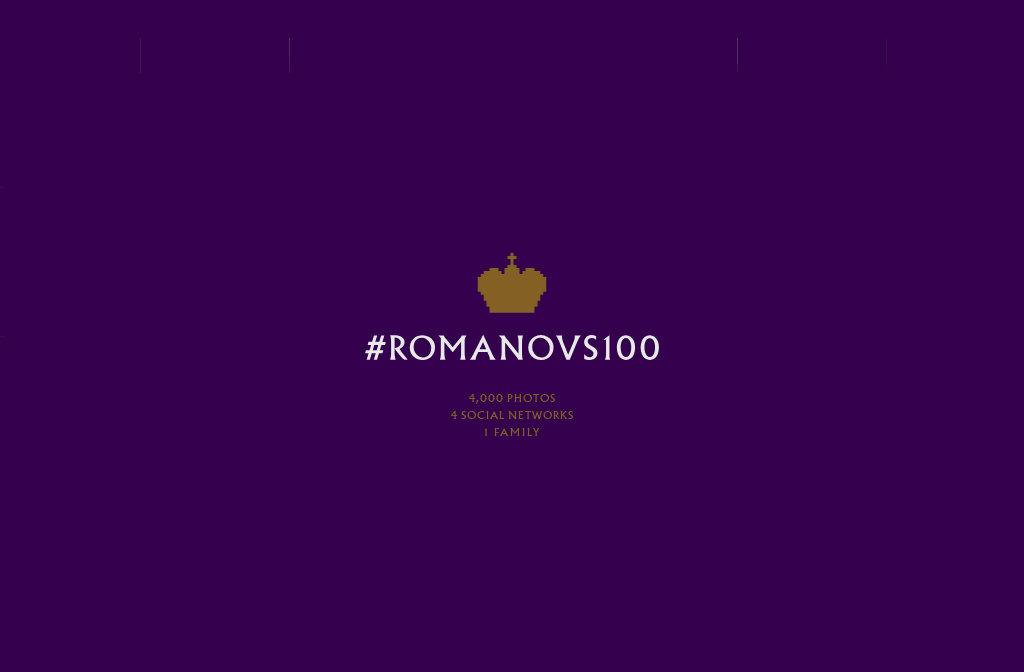
source: #Romanovs100.com
Nicholas Romanov holds a special place in the history of the Russian Empire. He was the last Tsar and had a tragic and violent death at the hands of the Bolsheviks who executed him, his wife and his five children on July 17, 1918.
To pay tribute to the Romanovs, the Russian TV channel RT created and produced #Romanovs100.
#Romanovs100 is an educational project designed to bring to light a part of Russian history which has been erased from the history books by the Soviet rule.
The inspiration for this project came from the Romanovs themselves – they were pioneers of photography. In the early 20th century they owned the world’s first portable Kodak cameras and captured almost every meaningful event in their lives.
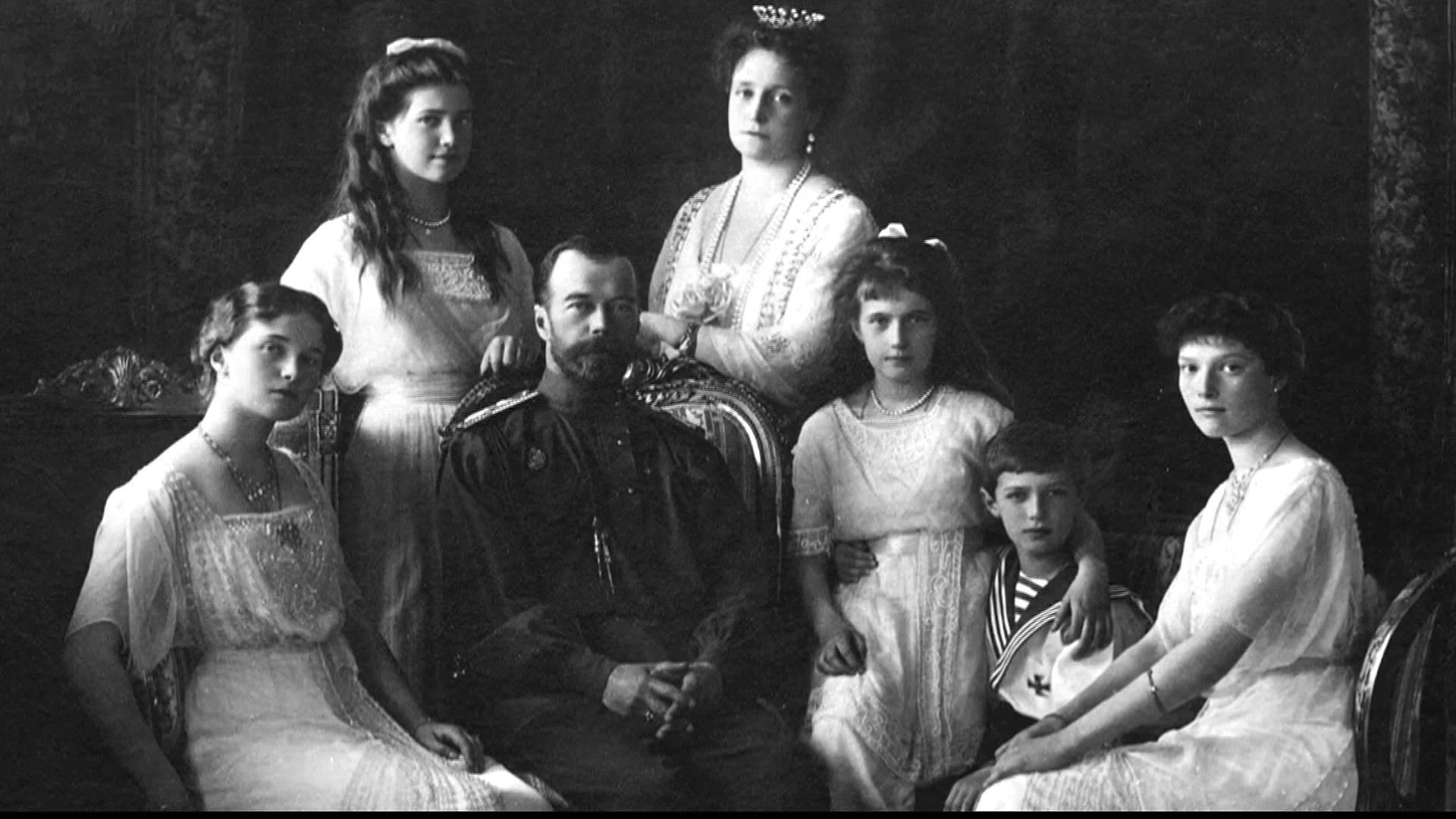
The Romanov family / #romanovs100.com
Fortunately, the Romanov archive has been preserved. The team unearthed over 4000 photographs which detailed the family’s private life.
Let’s see how #Romanovs100 came to life!
Campaign Goal:
Tell the story of the Romanovs, the Russian Empire’s last royal family with the purpose to educate the audience on decades of unknown history.
Campaign Tools:
+4000 turn of the Century black and white photographs taken by the Romanov family members.
Campaign Strategy:
Combine the visual language of photography with the digital reality of social media.
Campaign Mediums:
- Website: https://romanovs100.com/
- 4 social networks: Facebook, Instagram, Twitter, YouTube with each account showcasing its own narrative, format and content.
10 Creative Directions:
1. Facebook
180° retro images in spherical view, 3D immersive experience.
2. Instagram
Two accounts, one of the royal dog, Joy.
3. YouTube
42 short documentary-style videos
4. Twitter
Five accounts featuring “real-time” blogs by Tsar Nicholas II himself, his wife Alexandra, their family doctor and their four daughters collectively referred to as OTMA (Olga, Tatiana, Maria, Anastasia).
We’ve played bezique with Nicky as usual until 10:30pm, then I went to sleep. Now they say we have to get up and go downstairs. Is this an evacuation? #Romanovs100 pic.twitter.com/OdZoPMTpRi
— Alexandra Romanova (@EmpressAlix1917) July 16, 2018
Alexei also plays endless games of draughts, bezique and chess with mama and papa. His leg is getting better, but very slowly #Romanovs100 pic.twitter.com/ZhLTkIYVlC
— The Romanov Sisters (@OTMA_1917) July 8, 2018
5. AR photo album
A limited print edition of the project using AR technology to create an interactive history book.
Romanovs100: AR family photo album (Extended version) from #1917LIVE on Vimeo.
6. Video teasers
Using 8mm & 16mm retro cameras and authentic stage props, the team reconstructed several of the Romanovs’ original photographs, setting the still images in motion.
#Romanovs100: The Snow Tower (TRAILER #1) from #1917LIVE on Vimeo.
7. Ambrotype posters
Photo teasers using 160-year-old ambrotype photography technique.
How it’s done:
#Romanovs100: 19th century photo technique in action from #1917LIVE on Vimeo.
The ambro-photograph:
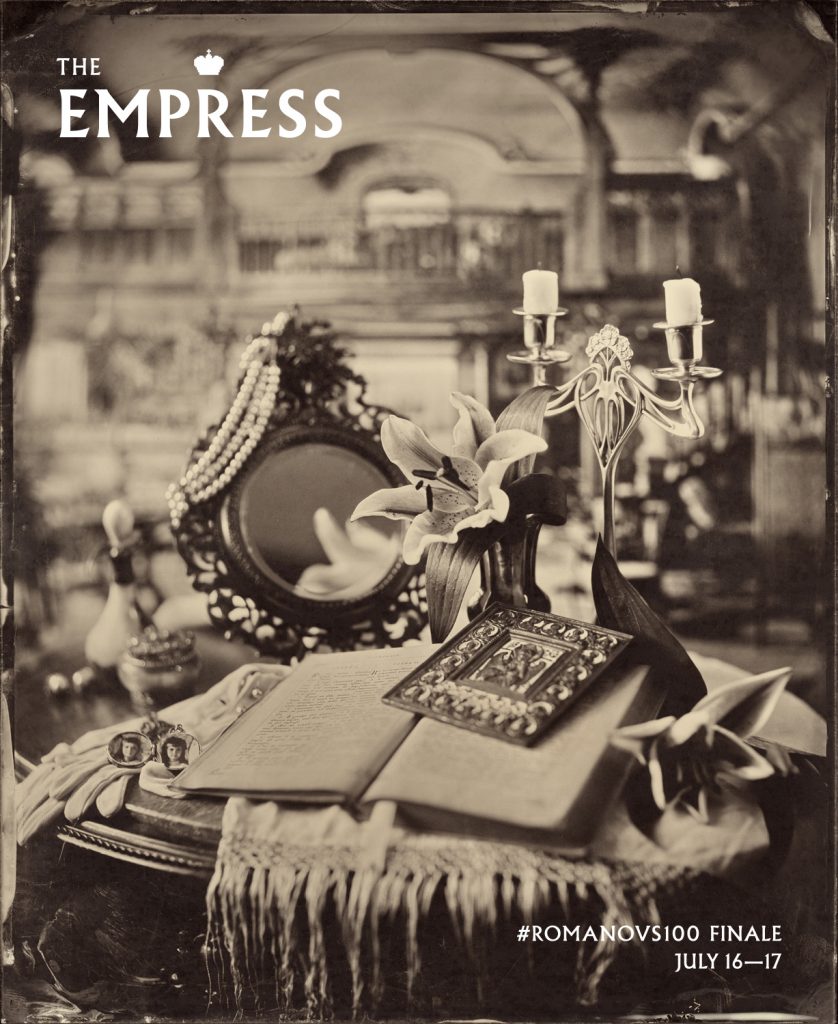
source: #Romanovs100.com
8. Original soundtrack to illustrate the project in YouTube and Facebook videos, teasers and trailers.
9. VR animation
A music video combining photos & VR Animation.
10. Colourization contest
Fans and followers were invited to enter the world’s first-ever digital colourization.
History in color: Romanovs100 digital colorization contest case study from #1917LIVE on Vimeo.
Campaign Results:
- 25 million impressions;
- 55,000 fans and followers;
- +1 million post engagements;
- +1 million video views;
- 500,000 minutes watched;
- #Romanovs100 on Twitter grew 2000%.
Global media coverage:
Sky News, BBC Newshour, History Extra, The Sunday Telegraph, Quartz, Daily Mail, Tatler, Culture Trip.
Awards:
- Best Images at the 2019 Shorty Awards;
- Silver at the 2018 Clio Entertainment Awards;
- Nominee at Social-Best Photography & Graphics at the 2019 Webby Awards;
- Merit at the 2019 ADC Awards;
- Most Innovative Use of Social at 2019 The Drum Social Buzz Awards;
- Best Original Content Series at the 2019 Digiday Media Awards Europe.
Join the Conversation
We’d love to hear what you have to say.
Get in touch with us on Facebook Group and Twitter.
Campaigns That We Admire : BIHOR COUTURE – standing up against cultural appropriation
Cultural Appropriation = the act of taking or using things from a culture that is not your own, without showing that you understand or respect this culture (Cambridge Dictionary)
Big fashion houses have been using inspiration from the local cultures of many countries without acknowledging that culture or giving credit to the original creators. Beau Monde, a fashion magazine with 100% original Romanian content, together with McCann Romania, decided to take a stand against cultural appropriation by launching BIHOR COUTURE, a Romanian fashion brand with designs created by the same Bihor County craftsmen that the large fashion houses failed to credit.

Stella McCartney used traditional African motives in her Summer/Spring 2018 collection. Louis Vuitton debuted a line of blankets, worn as coats by the people of Besotho, as part of their menswear collection. Dior made an entire collection out of a print identical to one of a local Indian designer. Just last year, Tory Burch copied a Romanian coat from Oltenia. Then Dior included a Romanian jacket from Bihor in their couture collection and is selling that jacket for EUR 30,000, but no royalties are returned to the original creators.
Beau Monde has always been a supporter of authenticity and this brand is the best example of Romanian authenticity and how centuries-old traditions can be integrated in our modern times, in the lives of the young generation. Traditions should not be forgotten; traditions should be passed on and promoted. If we were an inspiration to others it means that we have a valuable product and this brand and this campaign can help us sell our original creations abroad”, stated Roxana Dobrita, Beau Monde Editor in Chief.
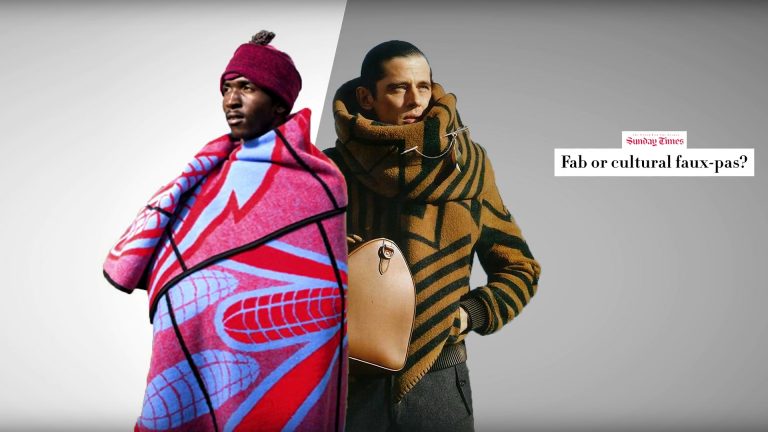
The new fashion brand is composed of 100% authentic Romanian creations from Bihor County. All of the item can be purchased on www.bihorcouture.com. Traditional jackets, coats, blouses and skirts, are all hand-made by local craftsmen, with care and attention towards respecting the cultural heritage of this rich historical region of Romania. You will also find here the original jacket that inspired Dior.
Bihor Couture is not only a brand that sells authentic clothes from Bihor. It serves as a model created to return money in the local communities. So we can enjoy these beautiful traditions for generations to come. The model can serve as an inspiration for other cultures that face the same problem,”said Catalin Dobre, Chief Creative Officer, McCann Worldgroup Romania.
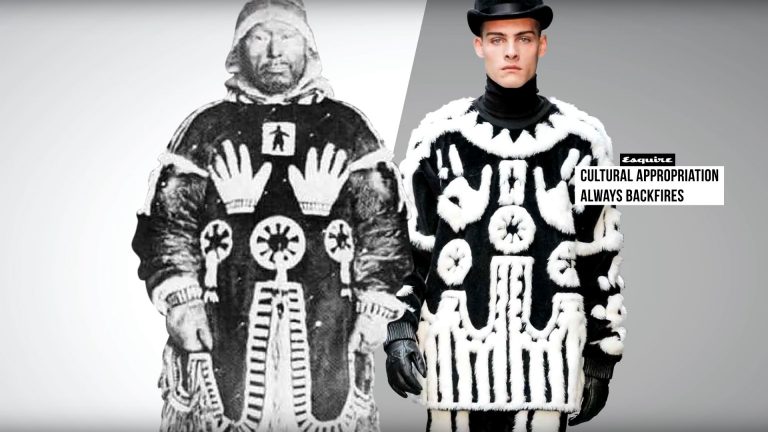
On her turn, Ioana Zamfir, Group Creative Director, McCann Bucharest, added:
Getting inspired by other countries’ rich heritage is normal, but the problem is not giving any credit, which means that nothing returns to these local communities of creators and traditions keepers. The spotlight that a big brand could put on them, by merely acknowledging them as a source of inspiration, would translate into customers for their creations. They are struggling to make a living for themselves and also keep precious traditions alive.
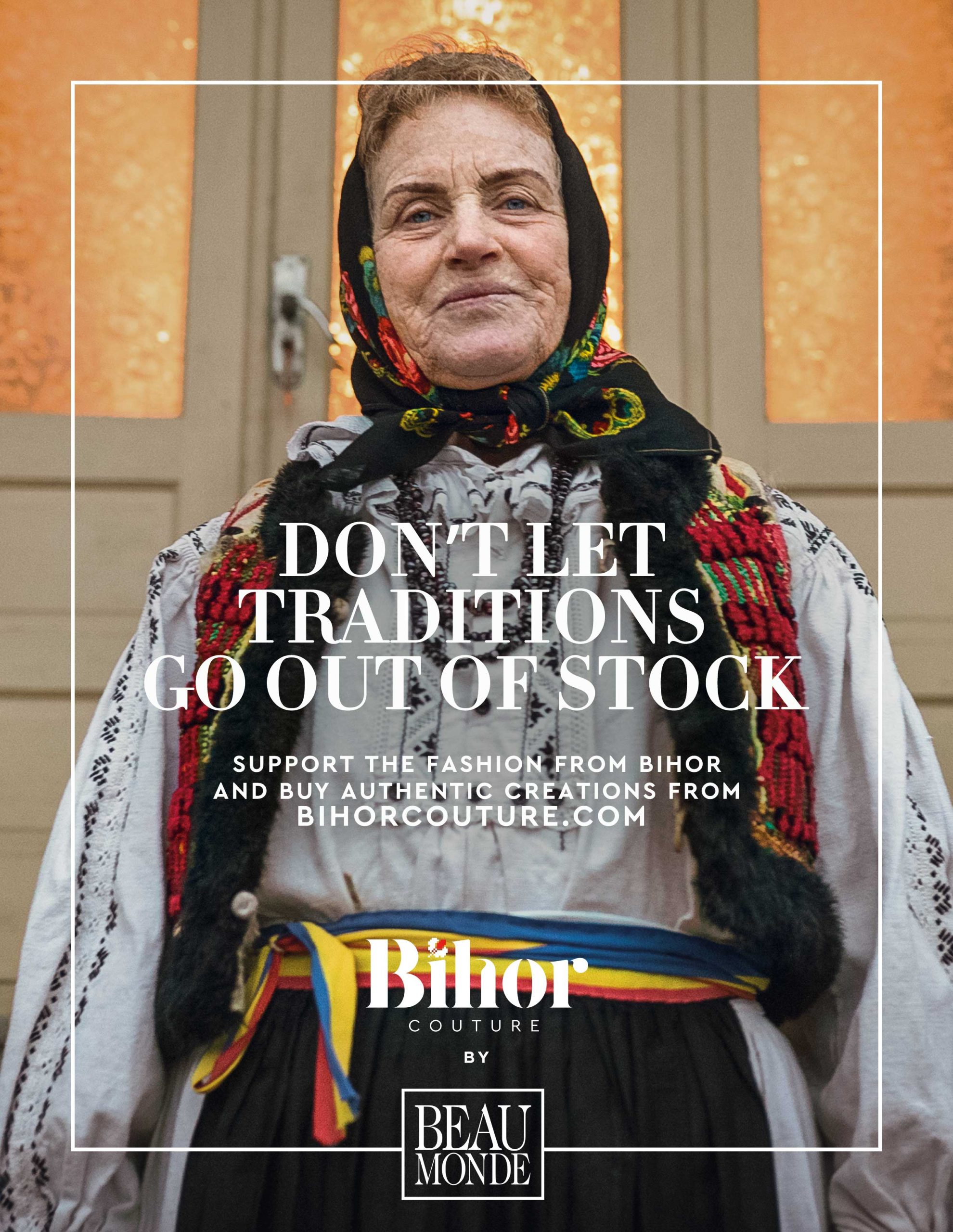
CAMPAIGN CREDITS: Roxana Dobrita, Editor in Chief Beau Monde Style; Catalin Dobre – CCO McCann Worldgroup Romania, McCann CEE Creative Director;Ioana Zamfir – Group Creative Director; Ionut Cojocaru – Content Creator; Adina Cirstea – Copywriter; Sabina Popa – Art Director; Alexandra Albu – Regional Senior Account Manager; Corina Nica – Corporate PR Executive; Andreea Predescu – PR Manager; Andreea Sofrone – Account Director; Tiberiu Munteanu – AV Manager; Alex Popa – Producer; Andrei Mandru – Regizor; Radu Voinea – DOP; Valentin Ruscan – Second unit.
Why we like it:
- Real-time marketing action
- Creativity
- Inspiring
- The power to take a stand
- Smart advertising
- Goes beyond a simple campaign and activation
- Gives back to the community
Campaigns That We Admire : Together for MagicHome
Today we start a new series of articles that will go under the umbrella of “Campaigns That We Admire”. We want to bring in front of you ideas that were outside-the-box, that brought emotion, that changed something or that at least tried to. Campaigns on never-seen before ideas.
Therefore, we start with the great MagicHome campaign created by Jazz.
The context
2,500 children in Romania are currently treated for oncological illnesses and 550 cancer cases are diagnosed every year. Children suffering from cancer require medical care at pediatric oncology clinics, which are usually located far from their homes.
However, over 70% of the children come from families with limited financial means, which makes the costs of transportation and accommodation the main cause for children being diagnosed late, treatments or examinations being postponed or interrupted, dramatically reducing the chances of healing.
The idea
On the 3rd of November 2017 MagicMakers, the founders of MagiCAMP, decided to show the parents of ill children that they are not fighting cancer alone. They wanted to show everybody how they live. Literally. Therefore, they launched a fundraising campaign, with a very creative idea that came from the Romanian Cannes awarded agency Jazz and did, alongside all a long list of great personalities and people, what the parents do every day, for months, and even years. They sat. On a chair, next to a hospital bed. “We promised we won’t get up until we would raise the money for Magic Home, a 700 square meters building, next to the biggest oncology hospital in Bucharest. A place they so very much need. To cook. To take a shower. To cry,” says the statement on the campaign’s website.
What it is
MagicHOME is a real chance to treatment, a shelter that can help both parents and their children to keep going by offering them decent living conditions throughout the treatment: bathrooms with showers, the possibility to wash and dry their clothes, free meals, inside and outside playgrounds, psychological support and art therapy.
“It’s a campaign that got me emotional, that moved me and that reminded me of why I am working in advertising. It became viral, successfully surpassed its objective and brought us all that GOOD that we needed like air,” said Bogdan Vintila, group creative director Graffiti BBDO & ADC Romania member.
The Jazz team was formed of Raluca Matei, Roxana Cozaru (art directors) and Andreea Ghenoiu, Alina Varlanuta and Miruna Dumitrescu (copywriters). The campaign was declared Campaign of The Year at the ADC*Ro Awards.
The PR agency Rogalski Damaschin got involved to help push promote the campaign to the local media and key influencers.
Results
- simple and powerful great idea
- total dedication from all the parties involved
- emotion put at its best
- unforgettable and with great results
- strong message, carried out voluntarily by over 660 people
- the best proof that creativity and a great idea can change the world for better
- Unintentional Viral Videos: Videos that the creators never intended to go viral. These videos may have been posted by the creator or shared with friends, who then spread the content.
- Humorous Viral Videos: Videos that have been created specifically to entertain people. If a video is funny enough, it will spread.
- Promotional Viral videos: Videos that are designed to go viral with a marketing message to raise brand awareness. Promotional viral videos fall under viral marketing practices.
How to create an online storytelling campaign for an NGO
“Storytelling is how humans communicate with each other, the way that we make sense of complex information, and how we relay our experiences to others. Nonprofit storytelling can motivate people to pay attention and take action. Emotional, appealing stories can build an online audience for your nonprofit,” wrote TheBalance.
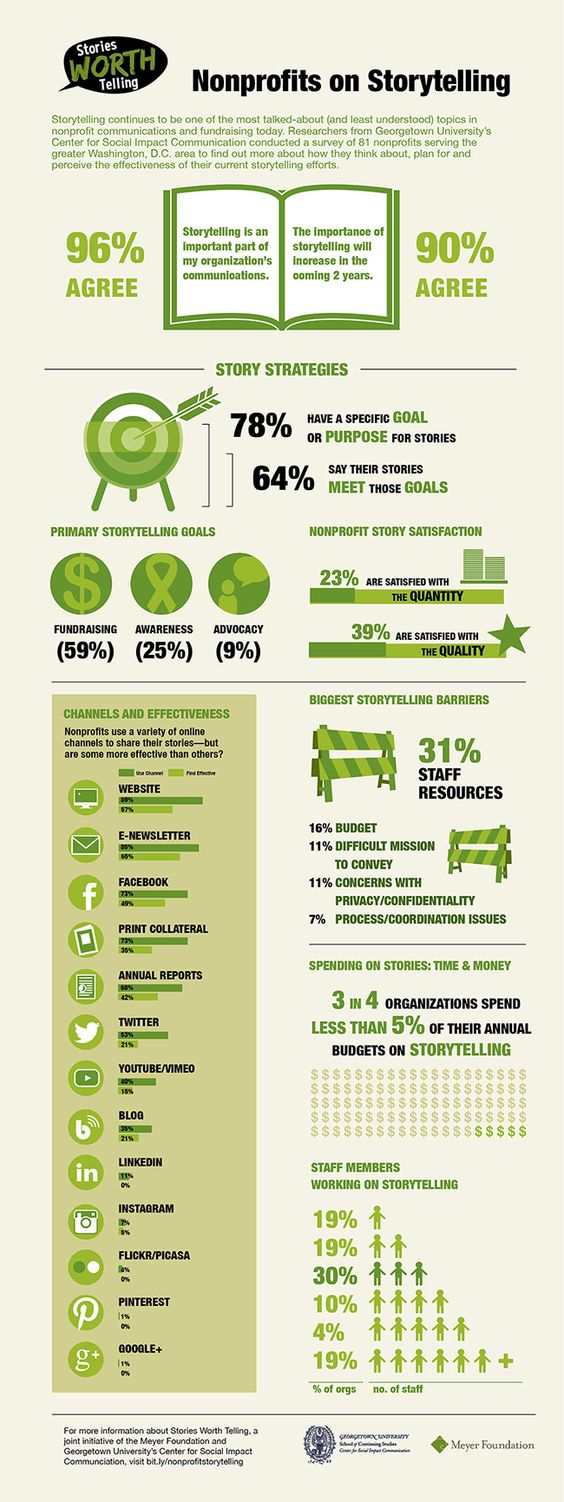
Videos allow you to combine your dynamic story with emotion to create a connection with your audience that words and photos cannot build. Emotion is your main asset to use. Moreover, organizations can convey impact in a way that engages and inspires donors by persistently telling stories.Through storytelling, nonprofit organizations can harness the power of emotion to make a connection with donors that inspires action.
According to thebalance.com, a storytelling campaign has three phases: planning, implementation, and evaluation. In the planning stage, you need to articulate the goal of the storytelling campaign clearly. “Design each campaign for a defined purpose and to accomplish a specific goal. You may need to carry out multiple storytelling campaigns per month to achieve your goal, or perhaps just one per quarter, depending on your resources. Once you define the action that you want people to take, you can determine who is most likely to take that action, and the emotional storytelling hooks to get them to do so.”
The next steps are selecting your audience and making sure that the story is true and it fits the audience’s expectations and realities. There are five main types of stories that nonprofits can collect and develop — value stories, social proof stories, founder stories, resilience/continuous improvement stories, and impact stories. After deciding that you must collect the necessary pieces of information to create the right campaign, choose the right channels to whom to send it and promote it,create it, share it and evaluate it. More details you can find here.
“Because e-mail is a great way to engage supporters who might not regularly visit your website, you can use it to hook supporters into your story and prompt further action, without it feeling like you’re asking for donations at every point of communication. Use e-mail as an opportunity to invite readers to be the hero of your organization’s mission. Layer in visuals: With the average person’s attention span maxing out at 8 seconds, you can’t afford to deliver a novel to people’s inboxes. Instead, think of your story as a short picture book. This email is such a great example because it injects an image after every couple sentences. Break up blocks of text with visuals to keep readers engaged and keep your copy clear, simple and concise,” wrote classy.org.
More ideas and pieces of advice you can find also here.
5 Things you might not know about Madonna Badger
Chief Creative Officer & Founder of the Badger & Winters, Madonna Badger describes it as an advertising, branding and design agency specializing in creating powerful ideas that establish enduring emotional connections with women. Being creatively led by a woman, it informs their collaborative process and deeply empathic approach to understanding women’s values and desires.
“Our goal is nothing short of brand love,” says Madonna Badger on Linkedin.
Interested in knowing more about one of Brandminds’ 2017th Asian Summit speaker? Here are some fact you might not know about her:
1.She is credited with creating the famous Calvin Klein ad featuring Mark Wahlberg.
2. She was featured on the Crain’s New York Business 40 Under 40 list in 1996.
3. In a campaign with the hashtag #WomenNotObjects, the Manhattan advertising executive is looking to fight the objectification of women in the marketing and advertising world. “People are really seeing that objectifying women is really up there with inequality of women,” Badger told Matt Lauer on TODAY Tuesday. “I think that sex sells, but you know what the worst part is? It’s the harm we’re doing, and for me, that’s really what made me make this decision.” Badger has also pledged that her firm, Badger and Winters Group, will not use women as props or overly re-touch photos of women in their advertising.
4. “#WomenNotObjects” has helped Badger & Winters reshape itself as an agency and focus on assisting clients across all industry categories to connect with women in genuine ways, said Mr. Winters, for AdAge.com.
5. In June, for the 2017 Cannes Festival of Creativity, Ms. Badger spoke on a panel about gender, diversity and objectification of women with Procter & Gamble Chief Brand Officer Marc Pritchard.
What makes a video viral?
Creating a successful viral campaign is every marketer’s dream nowadays and many agencies aspire to the idea of creating a video that will have a huge impact on the target and will get shared fast and, therefore, create a big buzz around it. But what is a viral video and how hard is to reach that goal? According to the definition on techopedia, a viral video is any clip of animation or film that is spread rapidly through online sharing. Viral videos can receive millions of views as they are shared on social media sites, reposted to blogs, sent in emails and so on. Most viral videos contain humor and fall into three broad categories:
When it comes to the formula of creating a viral, it hasn’t been determined or shared yet, leaving us thinking that some of the success it has to do with luck and that most things actually go viral by accident. Very few people have mastered the art of creating viral content on purpose. What is for sure known is that it has to appeal to the target’s emotions, no matter their type (happiness, sadness, anger, joy, love, etc).
“Viral videos are the talk of the town—garnering coverage on popular blogs, rising to the top of sites like Reddit, being Tweeted and posted to Facebook, and even covered on the evening news,” wrote Megan O’Neill for AdWeek.
“There’s no specific number of shares, likes, retweets, reblogs, or whatever another measure of interaction needed to be reached in order for it to claim “viral” status. On YouTube, lots of videos get tens of thousands of views now shortly after being uploaded, but many people wouldn’t say that’s enough to consider it viral. Back in the day, however, when YouTube was much smaller and there weren’t as many users uploading videos, tens of thousands of views may have counted as <<going viral>>,” said Elise Moreau for Lifewire.
Moreover, advanced technology and platform design have made it way too easy to share things with our friends and followers, making the perfect environment for a ripple effect to occur on all levels of social media with the perfect piece of shareable content. All it takes is a few shares and the right audience to trigger an avalanche of sharing across the internet. It’s not easy to start a viral movement, but when it does happen, it can take the most regular people and turn them into internet celebrities practically overnight if it’s powerful enough.
According to Jonah Berger, marketing professor at the Wharton School at the University of Pennsylvania and author of “Contagious: Why Things Catch On”, quoted by entrepreneur.com, visceral response is what separates viral breakouts from busts. Berger has spent years investigating the mechanics behind virality, identifying six key drivers under the acronym STEPPS. They are Social Currency (e.g., sharing things that make people look good), Triggers (acknowledging that we talk about things that are top-of-mind), Emotion, Public (imitating what we see others do), Practical Value (news people can use) and Stories (information passed along under the guise of idle chitchat). “Each [driver] is a research-tested principle that increases the likelihood that people will talk about and share things, that brands get word-of-mouth, that services get shared and that videos get passed along the internet,” Berger explains. “We can reliably say that including certain characteristics and messages will increase the number of people who share [content] and the likelihood it will be shared.”
The ways the digital and the technology are changing the OOH
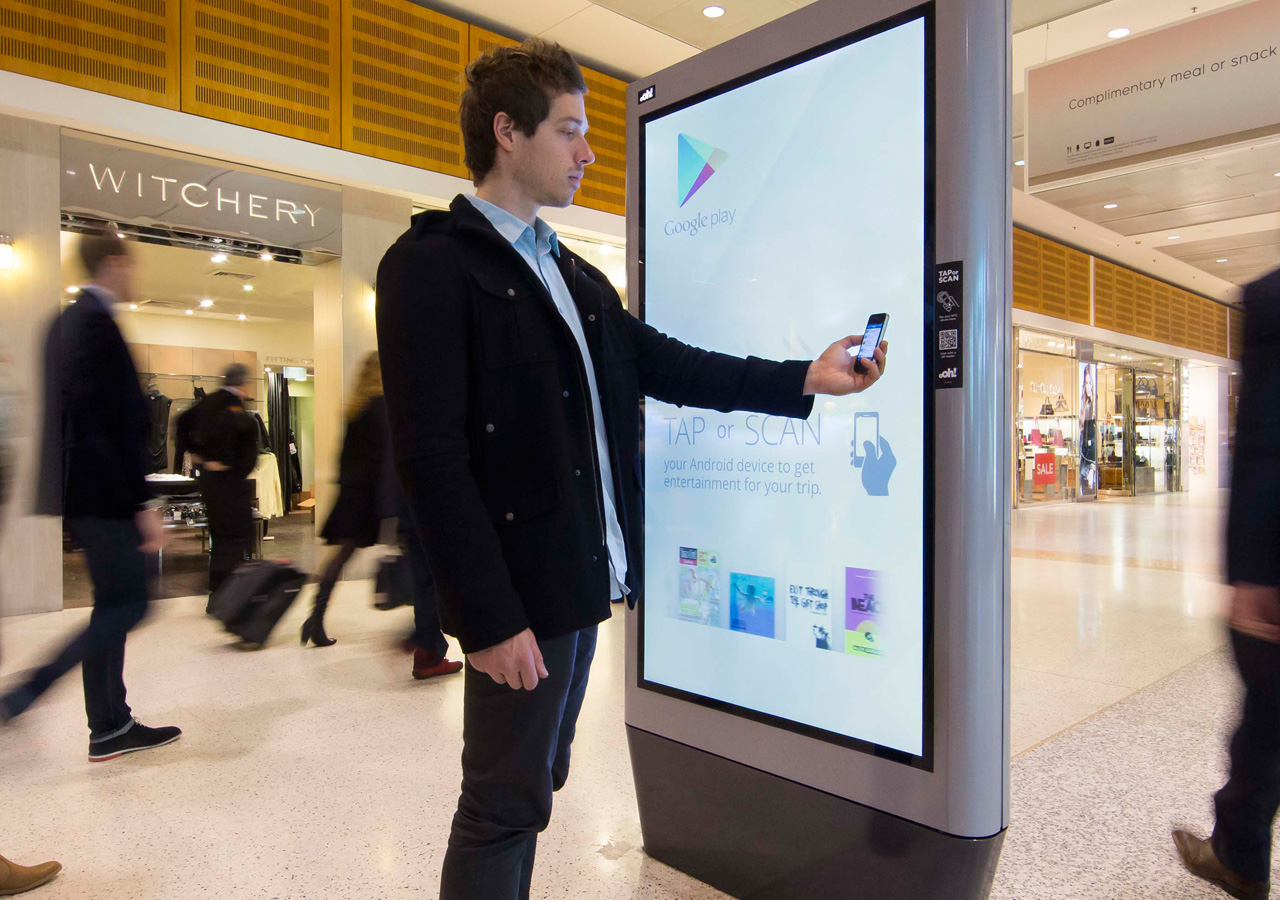
source: Screen Media Daily
Digital out-of-home is no longer standing by and being just a follower or a passenger. It has changed the face of outdoor advertising – and the future’s looking bright for this medium. According to the Advertising Association/Warc Expenditure Report, quoted by Campaign, DOOH claimed a 31% share of total out-of-home adspend in 2015 – set to rise to 40% in 2017. And PwC predicts that DOOH advertising revenues will overtake traditional spend in 2020, growing at a rate of 15% a year for the next four years.
“It’s no surprise, then, that in a 2016 Ocean survey of executives from media agencies and outdoor specialists, 86.3% identified DOOH as having the biggest growth potential over mobile, video on demand and other media channels. That growth is being fuelled by a rapid expansion of DOOH inventory, new technologies and innovative creative that plays to the medium’s strengths,” added the famous advertising magazine.
Taking a look at the Romanian situation, several major industry specialists agree that the main international trends are around digital OOH media. More and more of the OOH trades will go programmatic, following the development of more advanced markets where programmatic OOH is already a norm. Moreover, it’s very likely that the virtual and hologram revolution which began this year, fueled by large international technology players like Google, Facebook and other mobile technology firms, will be the beginning of a significant new trend in OOH reality, overlapping with a virtual reality experience.
The advantage that digital OOH has over traditional OOH is that one can better control the programmatic process, granting more flexibility in everything, from planning to the display of ads at a specific moment, in a desired context, to a desired audience.
Another big trend in the OOH industry nowadays is that OOH programming will help DOOH to grow faster than expected. Moreover, programmatic advertising doesn’t belong to only one media channel; it can be extended from online and mobile to other media, like TV, radio and OOH. And all media must be very well measured in order to be traded in a programmatic way.
More trends and influences that the marketers must watch for in DOOH are:
The number of digital screens will increase significantly due to several factors, including the significantly lower cost to produce LED screens.

source: Digital Signage
New developments in hyper-targeting. OOH planning systems are integrating with data sources including mobile carrier data, online browsing behavior and shopper purchase records. Marketers will be able to utilize OOH to target micro-specific segments on the move.
Real-Time OOH trading will steadily increase, as more OOH vendors integrate inventory into demand-side-platforms. The format’s ability to target consumers in real-time based on previous location histories has led to automotive, travel and retail advertisers dipping their toes in the water. Location-based mobile and digital out-of-home media are part of a larger multiscreen ecosystem that effectively amplifies brand messages to create a deeper level of engagement with active consumers.
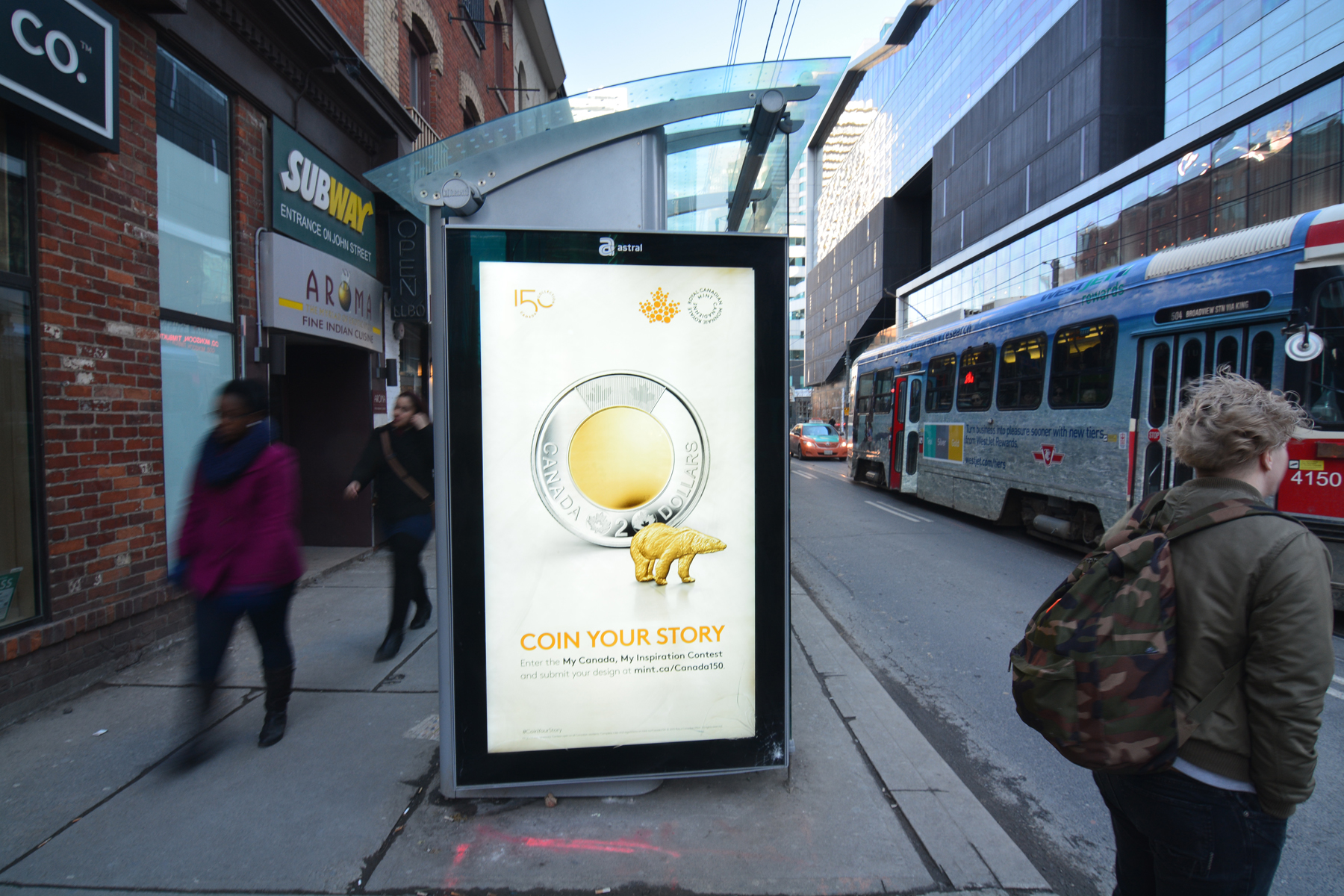
source: Bell Media
OOH will become more intelligent as forward-thinking brands take advantage of developments in Internet-connected screens, facial/object recognition and external data feeds. A convergence of art and science will lead to OOH creative that self-optimizes based on how people react. Dynamic content triggered by data feeds already allows advertisers to change creative in real-time based on external conditions including CRM data, weather, sports scores, traffic and social media sentiment.
Beacon adoption will grow, focused on analytics. Smart marketers will utilize Bluetooth Low Energy Devices (beacons) for data collection to gain a better understanding of their customers’ in store behavior. Large retailers already have rolled out beacons across their network of stores; this provides a wealth of valuable data such as popular products and aisles, with the ability to track store promotions right to the register.
Targeting drivers. Car manufacturers are the early adopters of smart billboard technology. In partnership with OOH Media, Porsche launched the world’s first interactive billboard campaign in Australia in January 2015. It used image recognition software to detect Porsches and display a company ad saying, “It’s so easy to pick you out in a crowd.” Lexus followed suit later in the month with a similar but more sophisticated Australian ad campaign. It used an algorithm to match vehicle information with environmental information, such as local traffic and weather conditions, to generate 80 variations of the same ad.
Porsche is teaming up with video surveillance software manufacturer Milestone Systems and IBM Analytics to deliver targeted billboard ads to specific vehicle models on their way to Australia’s Melbourne airport. These smart billboard software applications do not yet identify specific drivers, but Sydney University of Technology professor Jim Macnamara says that is coming soon.
In the United States, some smart billboard ads are targeting drivers based on speed. For instance, in 2014, Cisco used a billboard near San Francisco International Airport to promote its Cisco Live event by delivering messages of varying length, with faster drivers getting shorter messages.
OOH will be a core part of social and mobile strategies, and we will see more campaigns with OOH as a centerpiece. Coca-Cola launched an integrated digital campaign in Times Square as an extension of its hugely successful “Share a Coke” campaign, incorporating large digital billboards, Google search data, mobile and a socially activated call to action.
OOH will start being recognized as a direct response medium. As cardless payments including mobile payments gain traction with merchants, consumer usage will increase beyond early adopters. This boom in contactless “card-free” mobile payments is forecast to more than double this year, and over the next five years, U.S. mobile payments alone are forecasted to grow from $52 billion in 2014 to $142 billion by 2019 (Forrester). OOH will increase its relevance along the consumer journey; a format perceived primarily as a brand-awareness driver can now become an instrument in driving real-time purchase.
“OOH offers audience reach opportunities unsurpassed in the media landscape, particularly reaching young and upmarket audiences. The blurring of media boundaries, epitomised by the digital OOH landscape and the rise of mobile, should offer smarter solutions to brands feeling the pinch or exploiting consumer sentiment opportunities, particularly those targeting millennial audiences and expecting an immediate response,” concludes talonoutdoor.com.


